Make It Monday: More Words, Please! Expanding Our Manual Communication Boards

It’s another Make It Monday, our series on preparing core vocabulary materials for use with AAC learners. When we left off last week, we selected or created manual communication boards (MCBs) with a starter set of core words. Today, we pick up that thread by adding more words.
If you are working with teams that are new to AAC implementation, have a difficult time with change, or are showing resistance to this “whole AAC thing,” you might want to start off slowly and use just the main communication board for a few weeks to build everyone’s confidence. You can add more words once they are implementing it fairly well. The way I see it: Strong implementation of a basic core board is better than weak implementation of a more robust board.
It doesn’t take very long, though, to realize that as versatile as our core word MCB is, there simply aren’t enough words to say what we want to say. In this post, we’ll explore ways to embellish our core word boards
“What words should we add?”
The exact words you add will depend on what you started with (your original MCB) and your client’s needs, but, in general, you will add more high frequency words. These can be more core words, like additional verbs or descriptors, that will be useful in everyday conversation, words that go along with regular activities or lessons at school, or routines at home. Some suggestions:
- Temporal terms, like now, later, today, tomorrow, yesterday, before, after, etc.
- Size and quantity words, such as big, some, enough, etc.
- Shapes and words that describe appearance (e.g., long, fat, smooth), including colors
- Location and spatial terms, such as here, next to, down, middle, etc.
- Conjunctions (e.g., and, or, but)
- Prepositions, such as because, in, at, etc.
- Negation (e.g., not, nothing, never)
In addition, you may want to add words for high-interest items so they can talk about the things that interest them most. Josiah, a young man with autism and many sensory challenges, created some of his longest and most creative sentences by combining core and fringe. His messages, while far from perfect, conveyed what HE wanted to say. “Get ready call Ms. Sara.” “Give it me. No Anthony.” “Stop it Rainbow Dash.” “I get Orange Crush mom please. “Hurry up go Chuckie Cheese.”
“But those aren’t core words!”
Agreed! AAC systems with only core are limiting, so we generally want to add specific words that our AAC learners need or want to say (see this post for more on the core+fringe). Functional AAC systems have both core and fringe vocabulary, and the fringe words we add in the flip strip are ones that your learner would need to use frequently. These can include:
- Names: family, friends, classmates, neighbors, school staff, therapists, characters from favorite shows or books (e.g., “Clifford”)
- Specific objects: favorite foods (e.g., “Nutella,” “Cheetos”), toys (e.g., “MagnaDoodle”), clothes (e.g., “Dora tee shirt,” “Cinderella slippers”)
- Specific place names: restaurants, shops, clinics, parks (e.g., “Slide & Glide”)
- TV channels (e.g., “Nickelodeon”), shows or videos (e.g., “Curious George”), apps (e.g., “BrainPop Jr”), and games (e.g., “CandyLand”)
- Things that are calming or reinforcing (e.g., “Koosh ball,” “rainstick”)
“Where should we put them?”
There are several ‘right’ ways to add new words, but they all have one thing in common: they don’t interfere with the placement of the existing words. The new words are added around or beside the existing MCB so that there is no need to change the size or position of any of the original words. “That sounds good but HOW?” Here are some commonly used approaches.
Option 1: Add a Flip Strip
One of my favorite ways to add vocabulary to MCBs is to add a rectangular strip that can be attached to the top. You can add a single strip to grow the system slowly, or several of them if you want more vocabulary options. I have several of these that I’ve purchased from wonderful professionals like Cheri Chin, at Super Power Speech (example below; click here for more information).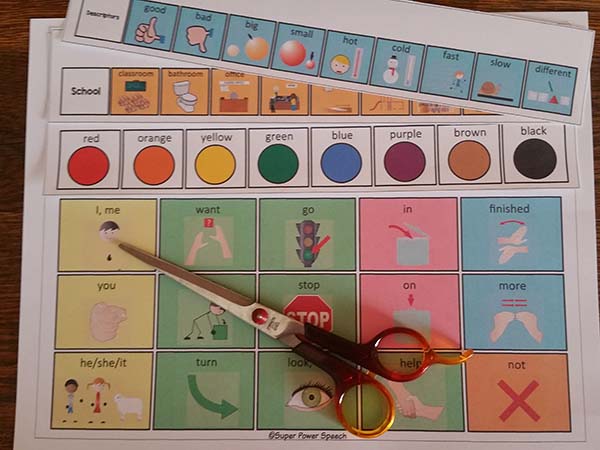
I also have downloaded free versions using the Boardmaker sharing site and AAC vendors. Saltillo, for example, has a terrific set of these flipboards that go along with the WordPower app (check those out here). There are some wonderful Pixon versions, too, that are free for downloading from the Minspeak site. As you can see in the collage below, there are more options in the full Pixon Project Kit, which also has a slew of lesson plans, teaching suggestions, and other resources.
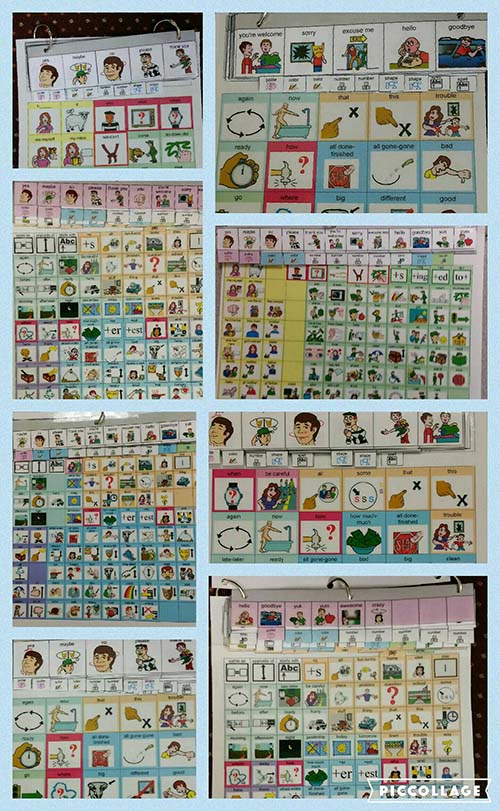
If you are new to the idea of flipstrips, it might be helpful to watch this video from Saltillo’s Implementation and Training Coordinator, Lisa Timm. Lisa describes the advantages of this approach and explains the process of assembling the free WordPower boards in the video below.
Option 2: Use in Conjunction with Other Boards
You may already have accumulated a stash of activity-based communication displays (ABCDs) that you’ve been using in therapy or classroom instruction. ABCDs area a popular way to get started in supporting learners with little or no functional speech, especially by professionals who had little AAC training in their preservice preparation programs, but still wanted to challenge themselves to better serve this population. Because of the limitations of this approach (read more about that here), many professionals have abandoned these in favor of core vocabulary boards, books, or apps. There is great appeal, however, to the specific vocabulary in ABCDs. Consider repurposing those tools to serve as a supplemental source of words. Having access to these activity-specific words in addition to the core-vocabulary-rich MCB may be useful for some of your learners.
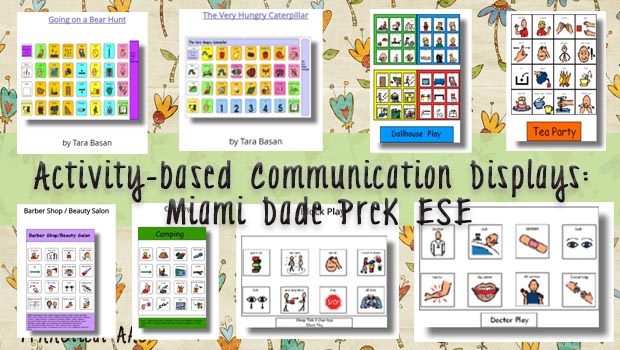
Option 3: Use with Low Tech SGDs
In the early days of AAC, it was common to see students with intellectual disabilities using low tech SGDs with 4, 8, or 32 messages. Now, however, we realize that even students with quite significant levels of disability need and benefit from a larger lexicon and so we move them to SGDs that can accommodate a bigger set of words. That leaves a lot of low tech SGDs laying around classrooms, cabinets, and closets. In some cases, we can breathe new life into those tools by populating them with words that complement the vocabulary on the MCB.
“But he hasn’t mastered the ones he has now. Why would we add NEW words?”
Mastery and consistency, while desirable, are not always the top priority.. This is especially true when waiting for the learner to acquire mastery causes us to hold off in exposing or teaching new words. In most situations, inconsistency shouldn’t be seen as a reason to postpone vocabulary expansion. For more thoughts on the concept of mastery with AAC learners, check out this post.
Adding New Words
For this portion of our Core Vocabulary Journey, our task is to review the MCB that we selected (or created) last week get started in creating the materials for added vocabulary. Even if you plan to implement just the core board for the first few sessions/weeks, this is the time to start making those materials. Whether you are taking the flipstrip approach or making overlays for low tech SGDs, it will some time to reflect on the needs, plan out the new vocabulary display, and get those made.
Thanks for sticking with us on our Core Vocabulary Journey. See you next time!
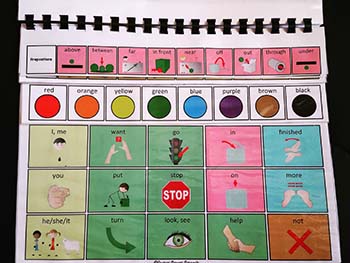
Filed under: PrAACtical Thinking
Tagged With: core vocabulary, Make It Monday
This post was written by Carole Zangari
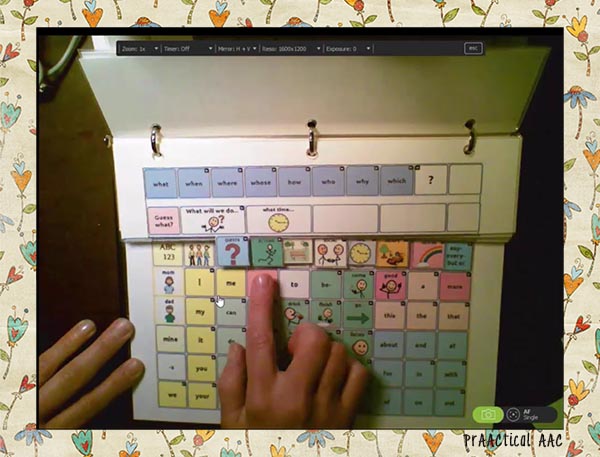


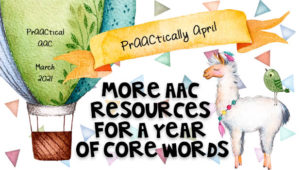
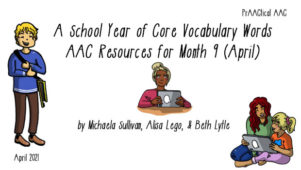

2 Comments
Thank you for including me!! 🙂 I am honored!
Absolutely, Cheri! I often use your materials in my AAC classes. 🙂